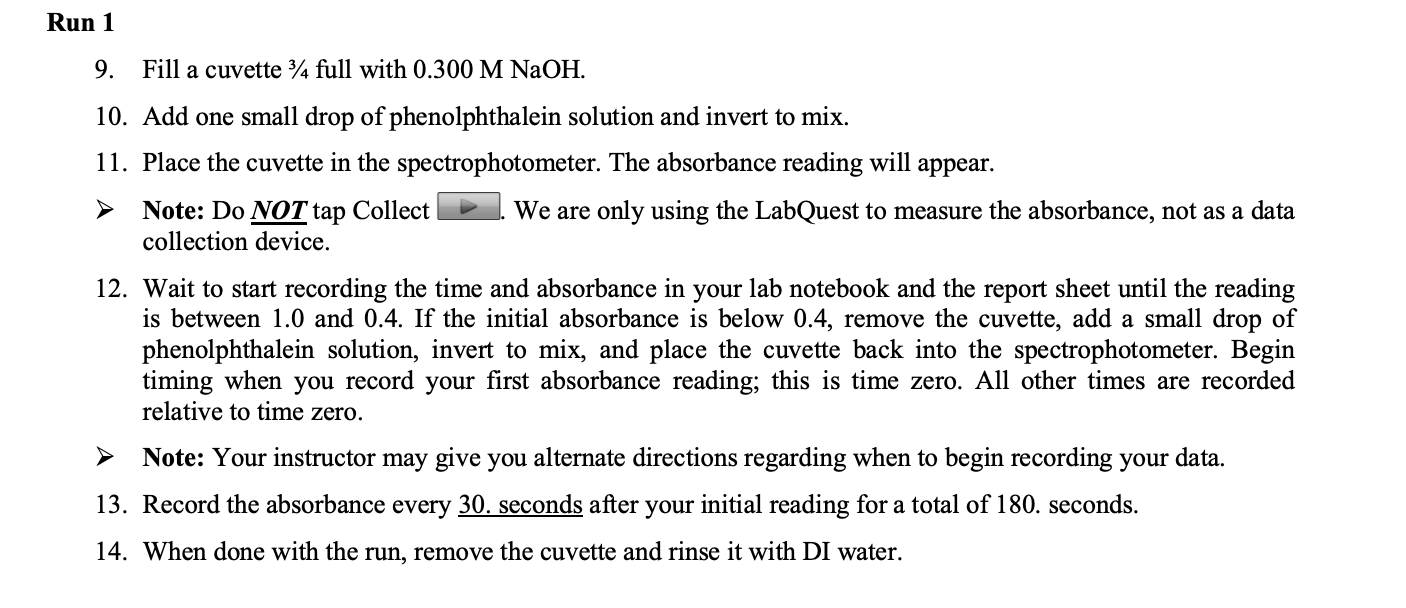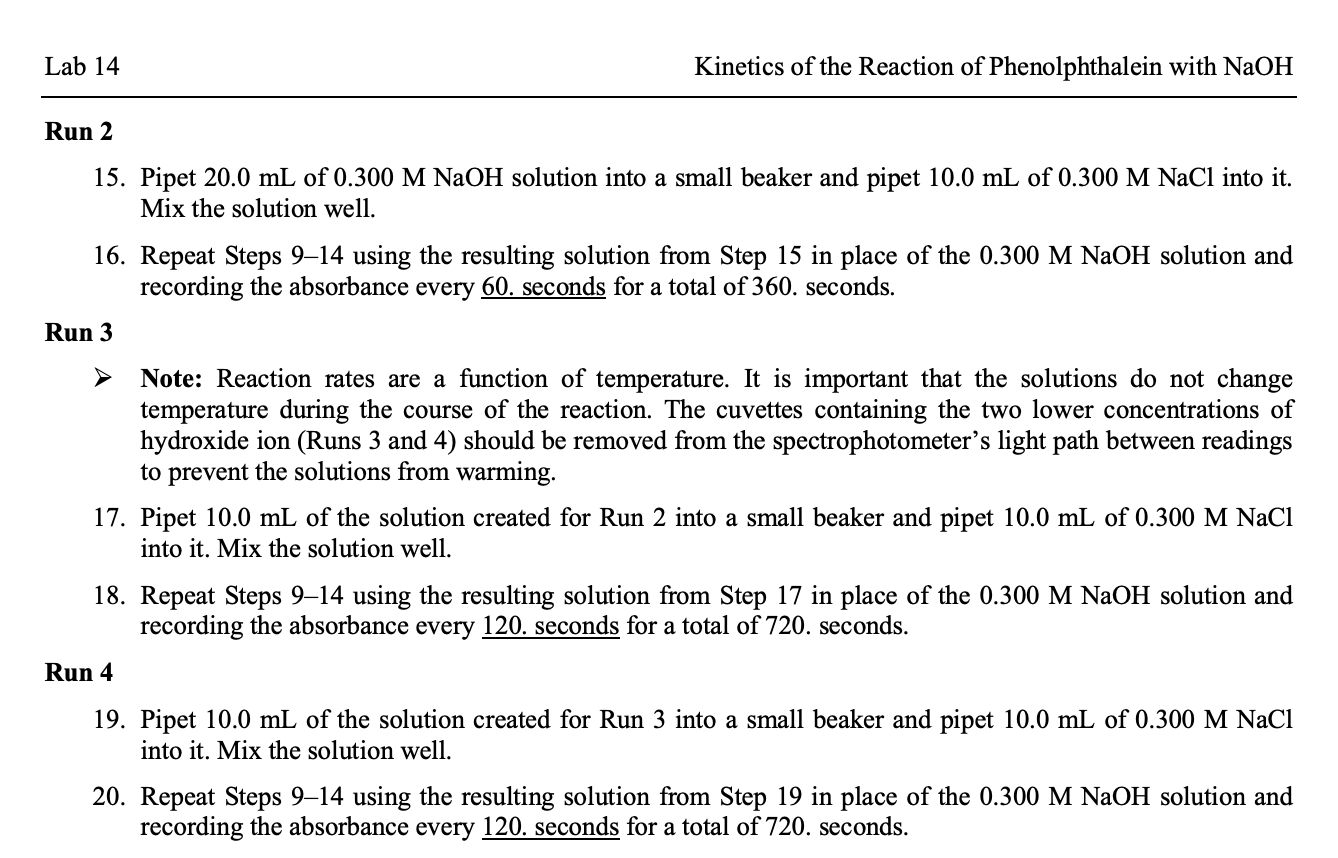Run 1 9. Fill a cuvette ¾ full with 0.300 M NaOH. 10. Add one small drop of phenolphthalein solution and invert to mix. 11. Place the cuvette in the spectrophotometer. The absorbance reading will appear. Note: Do NOT tap Collect collection device. We are only using the LabQuest to measure the absorbance, not as a data 12. Wait to start recording the time and absorbance in your lab notebook and the report sheet until the reading is between 1.0 and 0.4. If the initial absorbance is below 0.4, remove the cuvette, add a small drop of phenolphthalein solution, invert to mix, and place the cuvette back into the spectrophotometer. Begin timing when you record your first absorbance reading; this is time zero. All other times are recorded relative to time zero. Note: Your instructor may give you alternate directions regarding when to begin recording your data. 13. Record the absorbance every 30. seconds after your initial reading for a total of 180. seconds. 14. When done with the run, remove the cuvette and rinse it with DI water. Lab 14 Kinetics of the Reaction of Phenolphthalein with NaOH Run 2 15. Pipet 20.0 mL of 0.300 M NaOH solution into a small beaker and pipet 10.0 mL of 0.300 M NaCl into it. Mix the solution well. 16. Repeat Steps 9–14 using the resulting solution from Step 15 in place of the 0.300 M NAOH solution and recording the absorbance every 60. seconds for a total of 360. seconds. Run 3 Note: Reaction rates are a function of temperature. It is important that the solutions do not change temperature during the course of the reaction. The cuvettes containing the two lower concentrations of hydroxide ion (Runs 3 and 4) should be removed from the spectrophotometer's light path between readings to prevent the solutions from warming. 17. Pipet 10.0 mL of the solution created for Run 2 into a small beaker and pipet 10.0 mL of 0.300 M NaCl into it. Mix the solution well. 18. Repeat Steps 9–14 using the resulting solution from Step 17 in place of the 0.300 M NAOH solution and recording the absorbance every 120. seconds for a total of 720. seconds. Run 4 19. Pipet 10.0 mL of the solution created for Run 3 into a small beaker and pipet 10.0 mL of 0.300 M NaCl into it. Mix the solution well. 20. Repeat Steps 9–14 using the resulting solution from Step 19 in place of the 0.300 M NaOH solution and recording the absorbance every 120. seconds for a total of 720. seconds.
Ionic Equilibrium
Chemical equilibrium and ionic equilibrium are two major concepts in chemistry. Ionic equilibrium deals with the equilibrium involved in an ionization process while chemical equilibrium deals with the equilibrium during a chemical change. Ionic equilibrium is established between the ions and unionized species in a system. Understanding the concept of ionic equilibrium is very important to answer the questions related to certain chemical reactions in chemistry.
Arrhenius Acid
Arrhenius acid act as a good electrolyte as it dissociates to its respective ions in the aqueous solutions. Keeping it similar to the general acid properties, Arrhenius acid also neutralizes bases and turns litmus paper into red.
Bronsted Lowry Base In Inorganic Chemistry
Bronsted-Lowry base in inorganic chemistry is any chemical substance that can accept a proton from the other chemical substance it is reacting with.
Would the concentration of OH– in the solutions used for Runs 2–4 be different if deionized water was used to prepare them instead of aqueous NaCl solution? Explain.


Trending now
This is a popular solution!
Step by step
Solved in 2 steps






